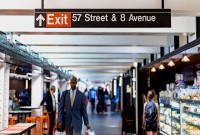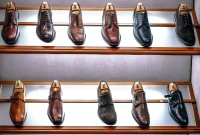- Home
- Business Processes
- Industry Knowledge
- Aerospace Industry
- Automotive Industry
- Banking Domain
- BFSI Industry
- Consumer/ FMCG Industry
- Chemicals Industry
- Engineering & Construction
- Energy Industry
- Education Domain
- Finance Domain
- Hospitality Domain
- Healthcare Industry
- Insurance Domain
- Retail Industry
- Travel and Tourism Domain
- Telecom Industry
- Leadership Skills
- eLearning
- Home
- Domain Knowledge
- Retail Industry
- Retail Industry: Revenue Model
Retail Industry: Revenue Model
Understand the traditional retail revenue model and, what are the variations in different revenue models adopted by key players in the retail industry. Analyze the pros and cons of various models. The most common and most profitable revenue model is that of the traditional retailer. The traditional retailer profits by selling products and services directly to buyers at a mark-up from the actual cost.
Revenue Models – Retail:
Successful retail operations depend largely on two main dimensions: margin and turnover. How far a retail enterprise can reach in margin and turnover depends essentially on the type of business (product lines) and the style and scale of the operations. In addition, the turnover also depends upon the professional competence of the enterprise. Margin is defined as the percentage mark tip at which the inventory in the store is sold and turnover is the number of times the average inventory is sold in a year.
In a given business two retail companies may choose two different margin levels, and yet both may be successful, provided the strategy and style of management are appropriate.
Given below are some revenue models adopted by the players of the retail industry:
1. Low Complexity, Low Margin, High Turnover Potential
The most common and most profitable revenue model is that of the traditional retailer. The traditional retailer profits by selling products and services directly to buyers at a mark-up from the actual cost. In the first model, the retailer assumes that low price is the most significant determinant of customer patronage. Low-cost retailers generally sell to the mass market with a strong emphasis on price over quality or other premium product/service attributes.
The stores in this category price their products below the market level. Marketing communication focuses mainly on price. Low-cost retailers typically offer a high number of SKUs at the best possible price. By emphasizing price, the low-cost retailer operates on very low margins and must have the market power to negotiate deep discounts from its suppliers, coupled with significant operational efficiencies. They provide very few services; if any, and they normally entail an extra charge whenever they do. The merchandise in these stores is generally pre-sold or self-sold. This means that the customers buy the product, rather than the store selling them.
Amazon and Wal-Mart serve as the best examples of low-cost retailers. Wal-Mart benefits from its vast size in the physical retail space, leveraging its volume operations in the digital space. Amazon has created its own efficiencies using digital technology. Pantaloon Chain and Flipkart are the Indian examples of such stores.
2. High Margin Low Turnover
This operation is based on the premise that distinctive merchandise, service, and sales approach are the most important factors for attracting customers. Premium retailers target highly segmented markets with an emphasis on prestige, quality, and performance much more than price. Stores in this category price their products higher than those in the market, but not necessarily higher than those in similar outlets. Many premium retailers find that higher prices positively correlate to the prestige of the brand. In many cases, the premium retailer sells its own branded products instead of reselling other brands. The focus in marketing communication is on product quality and uniqueness.
Merchandise is primarily sold in store and not pre-sold. These stores provide a large number of services and sell select, categories of products. They do not stock national brands that are nationally advertised. These retailers manufacture their own or work with contract manufacturers to develop name brand products for sale at premium prices. Typically, a store in this category is located in a downtown area or a major shopping center. Sales depend largely on salesmanship and image of the outlet.
Williams-Sonoma and Victoria's Secret are examples of premium retailers who have developed their own mainstream premium product category by selling quality, private-label products. Gilt Groupe is an example of a digital premium retailer that has created an outlet to sell other premium brands to a targeted group of customers.
3. High Margin High Turnover Stores
These stores generally stock a narrow line of products with a turnover of reasonably high frequency. Cost-plus retailers generally sell to a segmented mass market, trying to maintain comfortable margins instead of focusing on price, and justifying those margins through quality, service, and selection.
They could be situated in a noncommercial area but not too far from a major thoroughfare. Their locational advantage allows them to charge a higher price. High overhead costs and, low volumes also necessitate a higher price. Most cost plus retailers choose specific product segments, such as computers and electronics or office supplies, and develop a level of expertise that mass-market retailers cannot match. Others may offer a broad product offering but emphasize shopping experience or a higher level of customer service.
Staples and Best Buy represent the best examples of cost-plus retailers that focus on specific product categories, while Target is a good example of a cost-plus retailer that offers a broad array of products.
4. Low Margin-Low Turnover Stores
Retail enterprises in this category are pushed to maintain low margins because of price wars. Compounding this problem is the low volume of sales, which is probably a result of poor management, unsuitable location etc. such businesses, normally get wiped out over a period of time. These retailers spend most of their time fighting for sales volume and trying to build customer loyalty.
Related Links
You May Also Like
-
Markets are continuously changing and to understand the dynamics of any industry it is important to understand what is happening and how the industry market players see the future for the industry. In this article, we will discuss the recent trends witnessed by the retail sector. This document provides insights into major trends identified for the retail sector.
-
Retail Industry: Current Challenges
Today consumers are choosing multichannel buying experiences and expect that to be a seamless experience. To attract customer loyalty, retailers need to provide an experience that stands out from others. Learn the challenges faced by the retail sector today. Multi-channel sale avenues, changing consumer behavior, technological advances, rising competition, rising frauds, and supply chain management are some of them that require immediate attention.
-
FMCG or consumer packaged goods (CPG) are products that are sold quickly and at relatively low cost, examples include non-durable goods such as soft drinks, toiletries, and grocery items. They generally sell in large quantities, so the cumulative profit on such products can be substantial and these industries often operate on thin margins.
-
All of us are consumers, from cradle to grave, to be more precise, from the womb to grave or cremation. In a sense, the history of the consumer is the history of mankind. Consumers are the largest economic group in any country. They are the central point of all of our economic activities. But the very same consumers ate the most voiceless group also. The nature of consumer in terms of needs, consumption patterns, and problems has been changing and evolving along with the social and economic development in the course of history.
-
Competitive Landscape of Retail Industry
In an increasingly competitive landscape, retail industry players must compete in a number of ways. In this article, we will learn about the competitive landscape of the retail industry. Learn the key players in the retail industry and their business profile. Learn more about the top 5 industry players. Competition is rough, especially for the small business. Knowing how business stacks up to the competition is important to your business strategy.
-
Retail Industry Sectors: Types of Retail
A marketplace is a location where goods and services are exchanged. The traditional market square is a city square where traders set up stalls and buyers browse the merchandise. Now retail goods are generally sold in a number of different establishments. Convenience Stores, specialty stores, department stores, supermarkets & hypermarkets, discount stores, multichannel stores are some models used by the retail industry to provide goods to end customers.
-
Business Dynamics of Consumer Industry
The consumer goods industry is impacted by many dynamics like economic considerations, product considerations, price considerations that impact consumer buying choices. Advertisements, branding, marketing, variety of goods, and technology are the main drivers. Manufactures, retailers, warehousing, and logistics are all part of the supply chain for the consumer goods industry.
-
From an economic standpoint, there are three main types of consumer goods: durable goods, nondurable goods, and services. For marketing purposes, consumer goods can be grouped into different categories based on consumer behavior, how consumers shop for them, and how frequently consumers shop for them. One of the largest consumer goods groups is called fast-moving consumer goods. This segment includes nondurable goods like food and drinks that move rapidly through the chain from producers to distributors and retailers than on to consumers.
-
Durable goods are consumer goods that have a long life span (e.g. 3+ years) and are used over time. Highly durable goods such as refrigerators, cars, or mobile phones usually continue to be useful for three or more years of use, and hence durable goods are typically characterized by long periods between successive purchases.
-
Consumers benefit from retailing as retailers perform marketing functions that make it possible for customers to have access to a broad variety of products and services. Retailing also helps to create a place, time, and possession utilities. A retailer's service also helps to enhance a product's image. Retailing has a tremendous impact on the economy. It involves high annual sales and employment. Learn the importance of the retail industry in this article.
Explore Our Free Training Articles or
Sign Up to Start With Our eLearning Courses

About Us
Learning
© 2023 TechnoFunc, All Rights Reserved









